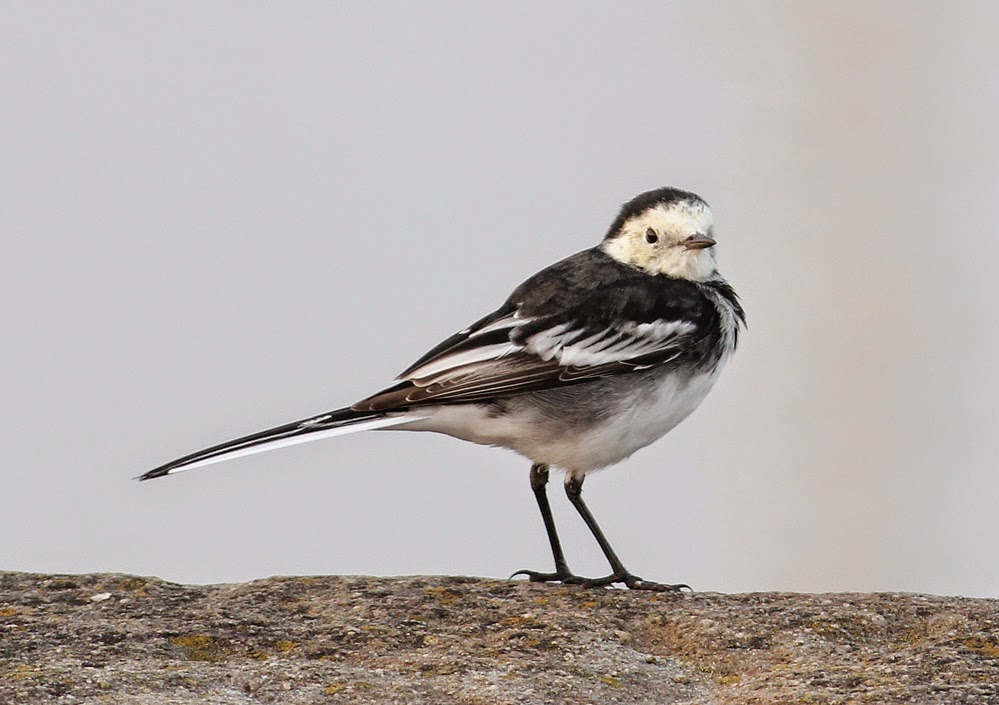We arrived back in the UK just yesterday following 14 days in sunny Skiathos. I’m hoping that blog readers haven’t deserted Another Bird Blog in its absence so I put together a few pictures of Greece so as to get the blog up and running again. Hopefully there will be local birding news soon after the essential catching up with friends, family, post and emails.
It’s a four hour flight from Skiathos to Manchester and for once Manchester Airport was bathed in Greek-like sunshine.
Lift Off - Skiathos Style
The town of Skiathos is the only built-up area of the island of Skiathos. It is situated on the south-eastern tip of the island in a windless bay which separates the island of Bourtzi in two. The area of the old and new harbours holds few birds where the requisite Yellow-legged Gulls can be seen flying over the buildings and the waters, occasionally resting on the rocky shore but rarely frequenting the many boats moored there, as if they are not welcomed by the fishermen.
Yellow-legged Gull
The Bourzti - Skiathos
One morning as we walked the old harbour there was an unfamiliar gull waiting for hand-outs from a man gutting small fish. As this was a shopping for gifts and tourist photo day I had only my 50mm lens so took a couple of shots when I realised the bird to be a Caspian Gull.
Caspian Gull
I think the current situation is that the pink-legged gulls of Britain and other northern countries are still called Herring Gulls Larus argentatus, the yellow-legged ones from the Mediterranean, the Atlantic coast of Iberia, Morocco and the Atlantic Islands are called Yellow-legged Gulls Larus michahellis. The ones that have pale pink or pale straw-coloured legs, and which breed north of the Black Sea, in the Ukraine and east of there, are called Caspian Gulls Larus cachinnans.
At the wooded Bourtzi there were resident House Sparrows and passage migrants of both Willow Warbler and Chiffchaff, and along the quayside the resident and ubiquitous but fairly unapproachable Hooded Crow. The only other crow noted during the holiday was Common Raven, numerous around the high tops and rugged coast of the north of the island.
Hooded Crow
Skiathos Town
Further along our walk and frequenting a waterfront restaurant was another gull, this one a juvenile bird which I suspect is also a Caspian Gull, but I’m far from being a gull fanatic so stand to be corrected.
Caspian Gull
Walking east towards the airport there are numerous waterside restaurants, one of which is splendidly named αλκυόνα - Kingfisher. We stopped for a delicious Greek salad without spotting a Kingfisher however the shallow clear waters and the often rocky shore looks eminently suited to the species.
Greek salad
Near the airport lake and along the quieter shore were water birds represented by Great White Egret, Little Egret and Grey Heron, plus more Willow Warblers, Chiffchaffs and unseen Sardinian Warblers.
Little Egret
Skiathos
Little Egret
Great White Egret
There's more Greek delight soon from Another Bird Blog. And hopefully back to the patch tomorrow.
Linking today to Skywatch Friday.
















































































